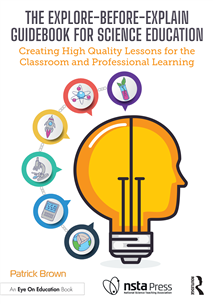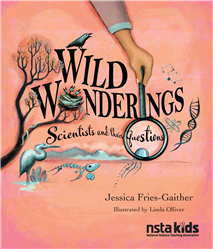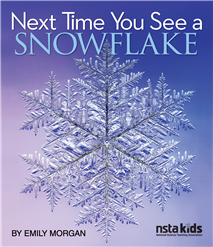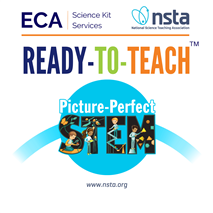All Three-Dimensional Learning resources
Reports Article
Freebies and Opportunities for Science and STEM Teachers, July 22, 2025
By Debra Shapiro
NSTA Press Book
This guidebook uses an Explore-before-Explain instructional sequence to help you facilitate the design of active meaning-making lessons in science....
By Patrick Brown
NSTA Kids
Wild Wonderings: Scientists and Their Questions
Click here to view video of Wild Wonderings Let your curiosity run wild! This lively book will inspire you to ask questions like scientists do. Why? Because questions can lead you to amazing discoveries. Like what? Like when theoretical physicist ...
NSTA Press Book
Wild Wonderings: Scientists and Their Questions
Click here to view video of Wild Wonderings Let your curiosity run wild! This lively book will inspire you to ask questions like scientists do. Why? Because questions can lead you to amazing discoveries. Like what? Like when theoretical physicist ...
By Jessica Fries-Gaither
Reports Article
Freebies and Opportunities for Science and STEM Teachers, November 12, 2024
By Debra Shapiro
Journal Article
This study aims to contribute to the growing body of research on the role of crosscutting concepts (CCCs) in three-dimensional (3D) teaching and learning by examining the complexity of elementary preservice teachers’ (PSTs) knowledge for teaching r...
By Soon Lee, Anna Arias
NSTA Kids
Click here to view video of Next Time You See a Snowflake This book will have you seeing snowflakes in a whole new way. You’ll learn about the science of snowflakes – how they form, why they are six-sided, what conditions are necessary for the...
Blog Post
Empowering Science Education With AI: Enhancing Three-Dimensional Learning
By Christine Anne Royce, Ed.D., and Valerie Bennett, Ph.D., Ed.D.
Journal Article
All students should have opportunities to investigate issues related to their personal interests and community priorities. Teachers value these goals but often lack materials that follow students' meaningful questions about phenomena while meeting st...
By William Penuel, Kate Henson, Zoë Bracey, Nicole Vick, Ann Rivet
Journal Article
Dog Days At School: Using Authenticity to Guide cross-curricular Learning in Kindergarten
The presented unit explores the often-overlooked potential of integrating science, social studies, math, and ELA through the lens of a kindergarten unit centered around the creation of a dog park. Emphasizing collaborative decision-making and communi...
By Amanda Sanderman, Chelsie Byram
Journal Article
Learning to be an Ambitious Science Teacher
Since the release of the Next Generation Science Standards (NGSS), students are expected to learn science according to the three-dimensions (DCI, SEP, CCC). In order for teachers to support the three-dimensional learning of their students, they need ...
By Alex Gerber, Heather Milo
Journal Article
Mapping in Two and Three Dimensions
Second graders used their own school-ground explorations, using journals and iPads for pictures and narrated videos, to create traditional, two-dimensional models of their school-grounds and all its natural and human-made features. These data collect...
By Jeffery Townsend, Connie Hodge, Sonja Yow, Whitney Cox
Journal Article
Integrating engineering into the science curriculum in a meaningful way requires planning that utilizes a 3-dimensional approach. Using a “gather, reason, communicate” framework (Moulding, Huff, Van der Veen, 2020) provided me with an effective ...
By Katheryn Kennedy
Reports Article
Freebies and Opportunities for Science and STEM Teachers, August 27, 2024
By Debra Shapiro
Class Pack
Now Available for Grade K-2 Picture Perfect STEM Lessons - Ready-to-TeachTM Picture-Perfect ClassPacks! • We are excited to announce our new kitting partner: ECA Science Kit Services! Now offering ...







